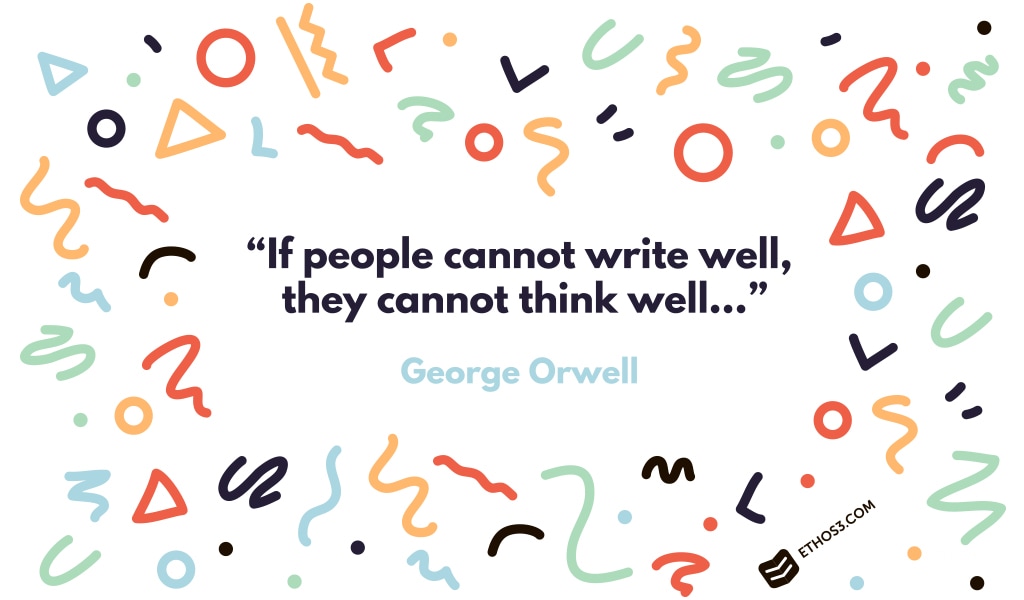The ability to write well has been devalued in many ways in recent years. For example, it was discovered through a 2011 test given across the nation that 24% of high school students were adept writers. Given this reality, nearly half of employers have implemented or offered training opportunities to encourage the improvement of grammar and other writing-related skills. Clearly, cultivating individuals with solid writing skills is a point of consensus for college and high school faculty as well as employers that individuals should master various styles of writing, however, the Common Core ELA standards emphasize source-based writing according to an article from Education Dive. This means that students have become more equipped to analyze and summarize texts, but not necessarily innovate off of material learned.
When stepping back and reviewing your deck, it is too easy to claim that a new layout or design is all you need to achieve the results you want. Presenters searching for a competitive edge should first look to their writing. It’s the foundation for any design element and scheme you will eventually create. Here are 4 ways writing skills elevate your presentation:
1. Grasping contrasting concepts
According to Marie-Paule Pery-Woodly from the University of Manchester, “it is the contrastive approach which allows the identification of universals.” For the professional presenter, writing skills can help navigate the multitude of studies, research, and real-life examples that you gather in the research process. And many researchers have found that when individuals can compare and contrast concepts, their comprehension of the text increases. At it’s core, this particular effect of enhanced writing skills enforces an appreciation for content and messaging structure – which bleeds into several other areas of your presentation.
Presentation Tip:
To illustrate your proficiency in comparing different concepts and ideas, use the words “but” and “because” in your presentation script. You can even employ the tactic in your presentation design by allocating a transition slide that has only one of those words on it. Also, to become a better writer in addition to becoming a better presenter, ask yourself questions while reading the newspaper or reading books. For example, ponder the organization of the text. Take notes of whether the writer analyzes ideas or quotes. Why did the author of the content do what he or she did? What’s the argument and the evidence? This exercise will enhance your critical thinking and build the foundation for utilizing contrasting concepts. In turn, you’ll be able to give a more substantial presentation message to your audiences.
2. Developing a suitable tone
After you complete the difficult task of contrasting concepts and structuring out your argument and overall message, your superior writing skills will enable you to better understand how to establish the appropriate tone for your content.
Presentation Tip:
Create a chart with these 3 categories: Desired Tone, Current Messaging, New Messaging. In the first category, write down 2-3 adjectives to describe the tone you want to achieve with your content. In the second category, document a snippet of text from a recent advertisement, marketing piece, or presentation. Finally, in the third category, revise the content from the second category to align with the tone you selected in the first category. Participating in a tone construction exercise like the one previously described will ensure consistency in your presentation message, in addition to your brand or company voice and identity.
3. Creating a narrative route
Adequate writing skills improve content planning. If you begin the narrative creation process with an understanding of how to synthesize the information you research and fashion the right tone for your brand, company, or organization, then you’ll be more than prepared to choose the most compelling narrative for conveying your message.
Presentation Tip:
Journaling about daily events is not only a potentially soothing exercise, but it could also add substance to your presentation narrative. Imagine all of the little moments, the subtle interactions that you’ve likely forgotten. Sometimes these occurrences have a more profound impact on us, but if we don’t write it down, the influence on our thinking diminishes over time. A recent study in Psychological Science conducted by researcher Ting Zhang found that despite humans’ tendency to choose other activities over journaling, over half of people wish they would have put pen to paper and remembered the finer details of ordinary instances.
4. Connecting with millennial audiences
A company called La Fleur Legal Marketing found that millennials are not only sensitive to writing mistakes, but they are also put off by them. So, if not for anything else, presenters should consider improving their writing skills to connect with their millennial audiences, who are vigilant about good writing and communication skills in general.
Presentation Tip:
After contrasting concepts, developing a tone, and creating a narrative route, ruthlessly edit your text, mainly on the slides in your deck. Leave no room for your millennial audience members view you as less credible or less authoritative. You are the expert. Show it. Make sure your content is spelling and grammar error-free.
Conclusion
In the Psychology of Writing, Ronald T. Kellogg discusses the task of writing as “the making of meaning.” By putting an emphasis on writing skills, the presenter takes control of his or her content and gives it meaning for audiences. Check out the resources below for more tips and tricks to make meaning in your presentations:
4 Ways to Set the Tone in Your Presentation Design
Choose the Right Presentation Narrative for Every Audience
